Menu
Our Editors on Acceptance/Rejection
ACCEPTANCE/REJECTION
Acceptance and rejection: even the words we use to describe how submissions are treated sound like something out of a rom-com. It’s probably not off-base to say submitting to literary journals is a lot like a (sometimes-bad) romance in which we’re constantly evaluating how editors feel about us: Is my writing good enough? Do they like me? What are they thinking? It’s so hard to know what they want!
If you’re a writer trying to puzzle out the mysteries of how literary journals choose the work they publish (and finally seal the deal with your favorite lit mags), our editors are here to help. Because, in the end, the relationship metaphor isn’t much of a stretch: The most important thing writers can do to increase their chances of getting the journal to say yes is to ensure that the writer and the journal are compatible.
In fact, the number one reason our editors reject writing is that the content, style, or aesthetic is not a fit for SAND. The submissions we do consider accepting are the ones from writers who understand us and share our tastes and values.
Below, our poetry, creative nonfiction, and fiction editors discuss what convinces them to accept a submission and the top reasons they reject submissions. We’ve also included bonus material, including texts we’ve published and links to readings and “why we chose it” segments.
POETRY
Poetry Editors Crista Siglin and Emma C. Lawson say it’s difficult to generalize about what poetry is looking for in poems because each poem is so unique in the way that it functions. They look for a wide range of aesthetic sensibilities, never relying too heavily on a more limited set of sensibilities. Crista and Emma like to see poems that contain an entrance point that they don’t necessarily encounter often. They also love to see poems that carry them through a particular state of being or carry them through a sense of transformation.
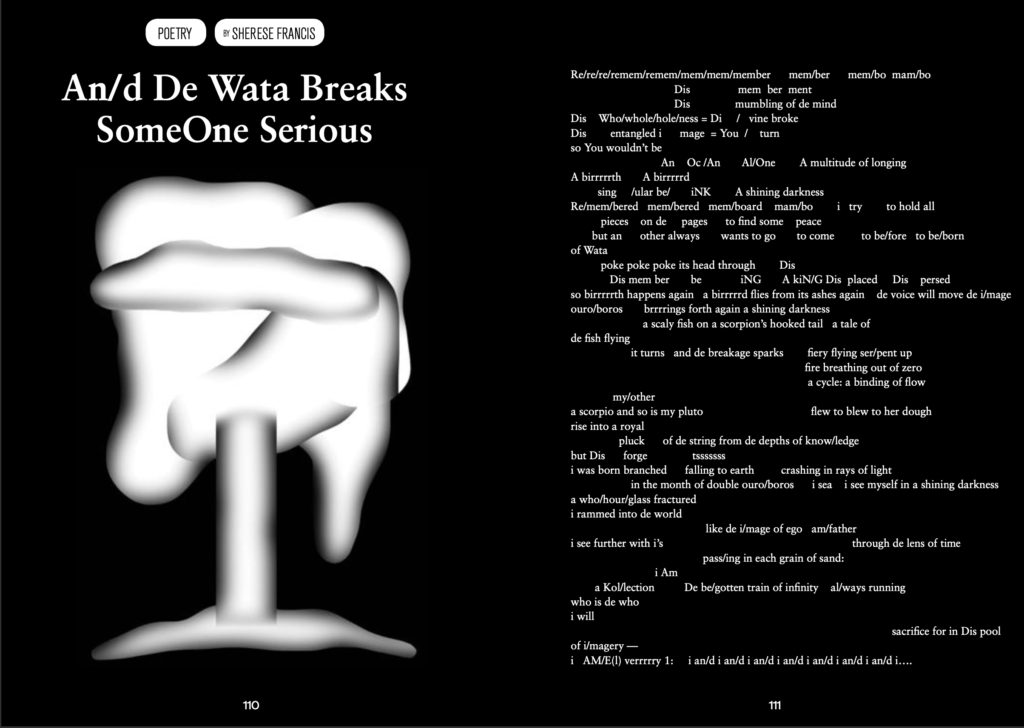
Art by Célestin Krier +”A/nd De Wata Breaks Someone Serious” by Sherese Francis, published in SAND 22
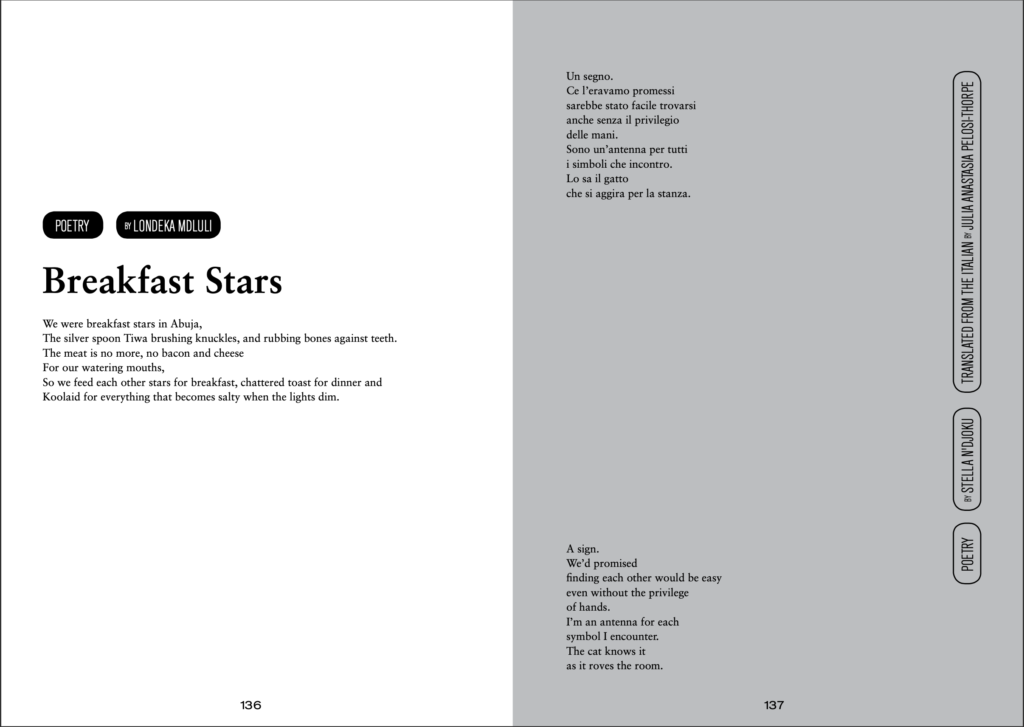
“Breakfast Stars” by Londeka Mdluli + “A Sign” by Stella N’Djoku, translated by Julia Anastasia Pelosi-Thorpe, published in SAND 22
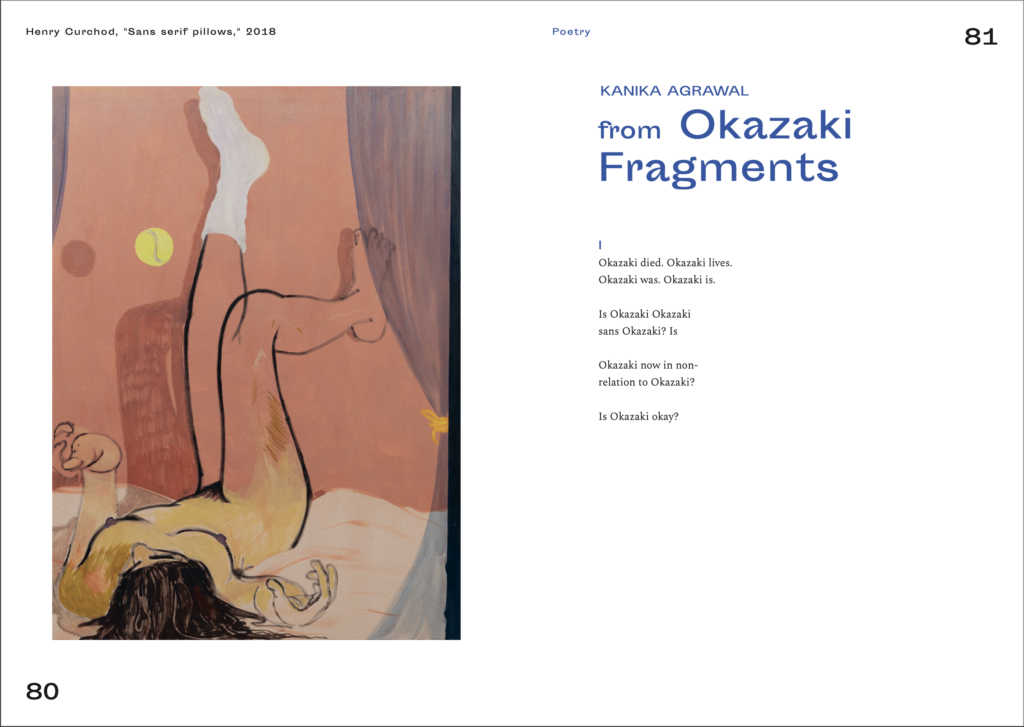
Art by Henry Curchod + “Okazaki Fragments” by Kanika Agrawal (SAND 19). Bonus: Watch Kanika discuss the intersections of science and poetry at Poetic Vision.
In addition to pieces not being a fit for SAND, another top reason for rejecting poems involves language. This usually includes work that is not sensitive to language or is not making good use of language, often by including too many spare words or using cliches without commenting on or engaging with those cliches more deeply. Crista and Emma also receive many poems from very talented writers with an amazing opening or closing line, while the rest of the poem is a bit unformed and is being carried along by the single line. They want poems that hold their attention in every moment.
CREATIVE NONFICTION
Creative Nonfiction Editor Melissa Richer notes that journals may interpret creative nonfiction differently, so it’s important to keep in mind that she’s looking for variety. Her goal is to show myriad examples of what’s possible in creative nonfiction and what’s at the forefront of the genre. That means publishing more traditional long-form prose next to hybrid pieces and other experimental work. The type of work she’s looking for really emphasizes the creative in creative nonfiction: long form pieces, flash, essays (especially layered essays), hybrid forms, autofiction, and imagery or graphic writing.
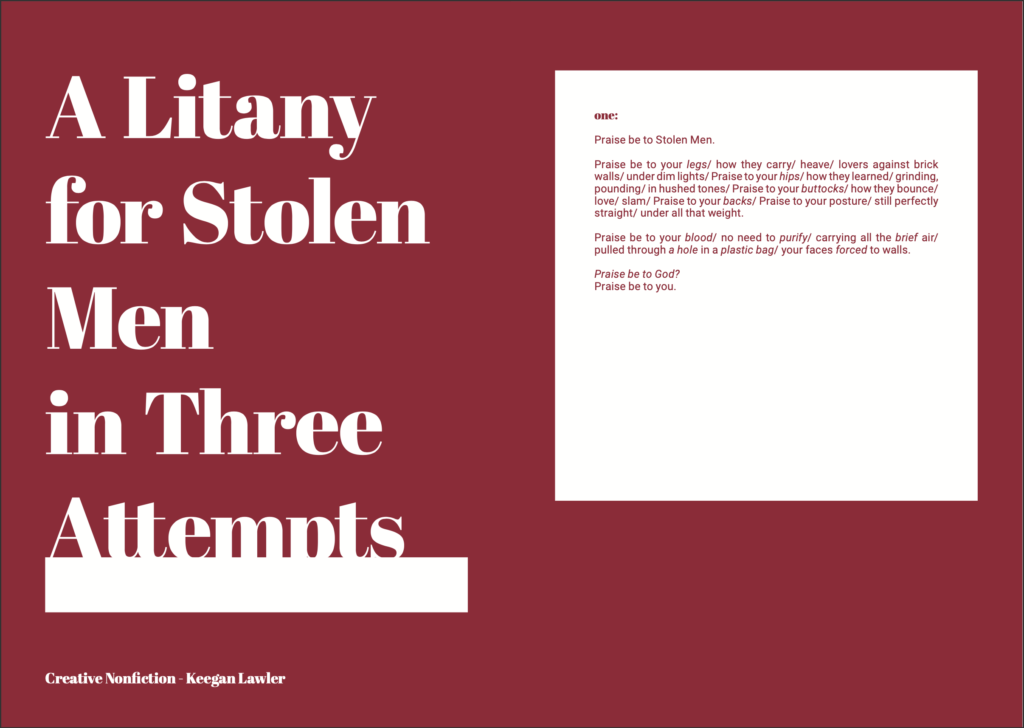
“A Litany for Stolen Men in Three Attempts” by Keegan Lawler, published in SAND 23
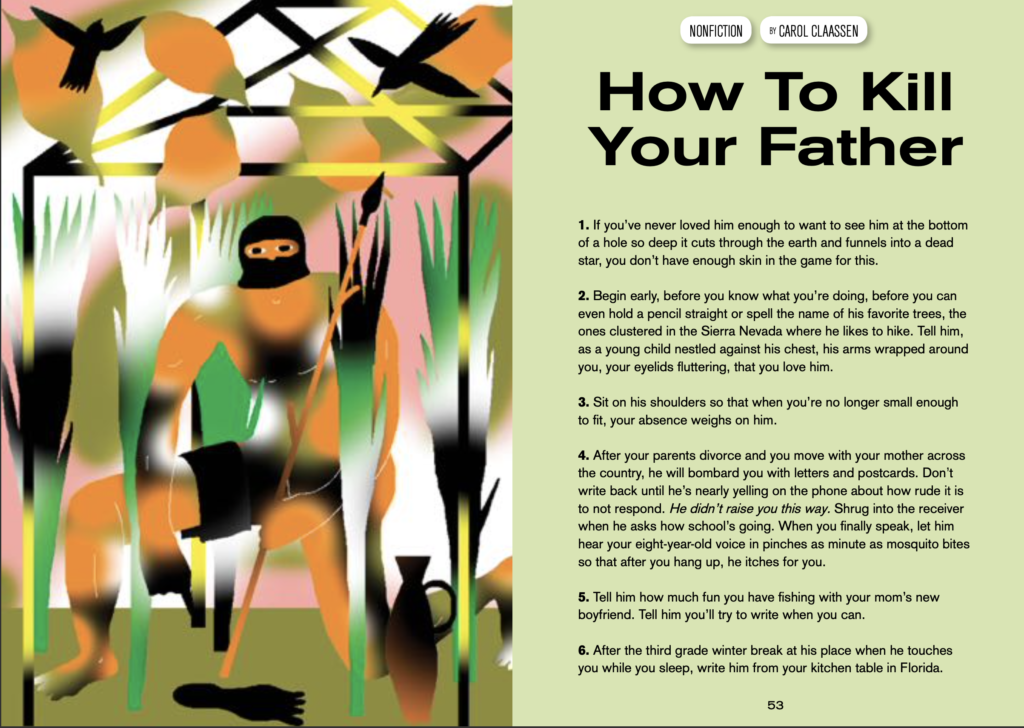
Artwork by Célestin Krier + “How to Kill Your Father” by Carol Claassen, published in SAND 22. Bonus: Watch Carol Claassen read from her piece.
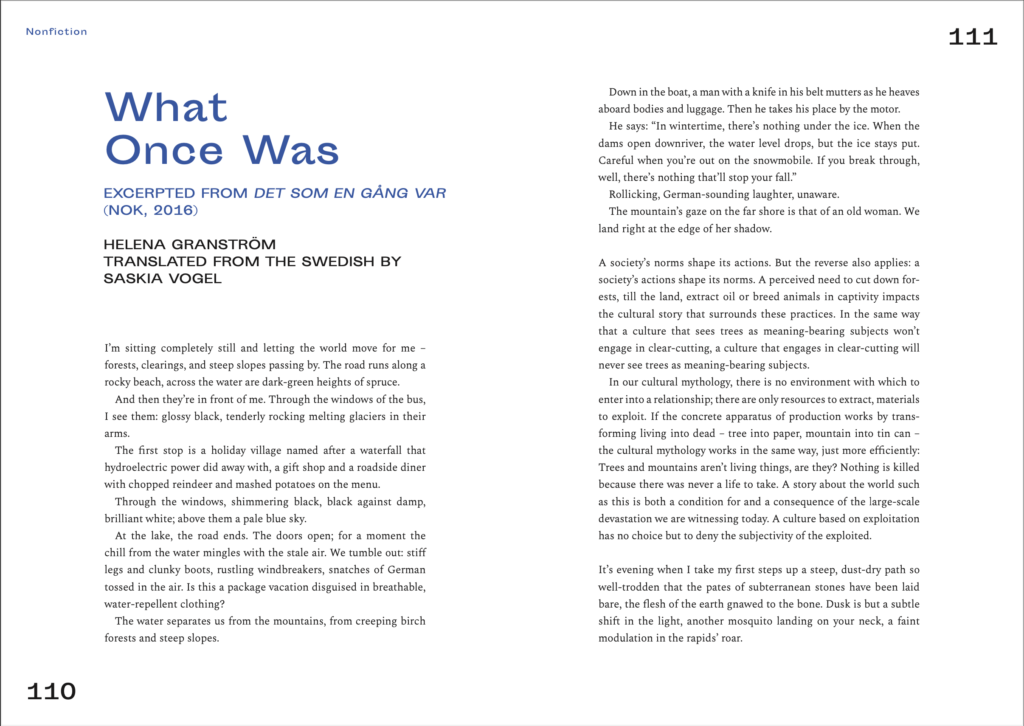
Excerpt from What Once Was by Helena Granström, translated by Saskia Vogel, published in SAND 19
Among the top reasons Melissa rejects work outside of it not being a fit for SAND: Many writers send pieces that are still in first or second draft form and therefore aren’t finished. She also sees writing with a strong central idea that becomes muddled when the author expands the piece to other parts of their lives, so that the story loses focus or is too wide in scope to be contained enough for the length of the piece.
FICTION
Editor in Chief Ashley Moore and Junior Fiction Editor Siena Powers say they’re most interested in risk-taking writing that experiments using intention, internal consistency, and attention to nuance. They want writing with a strong emotional heart and a subtlety that leaves readers with room for reflection on deeper issues. It’s long been important to our fiction team that SAND publish stories representing the full range of experiences and identities in the world, and that these stories are told from a place of lived experience or from a place of deep sensitivity and thorough research.
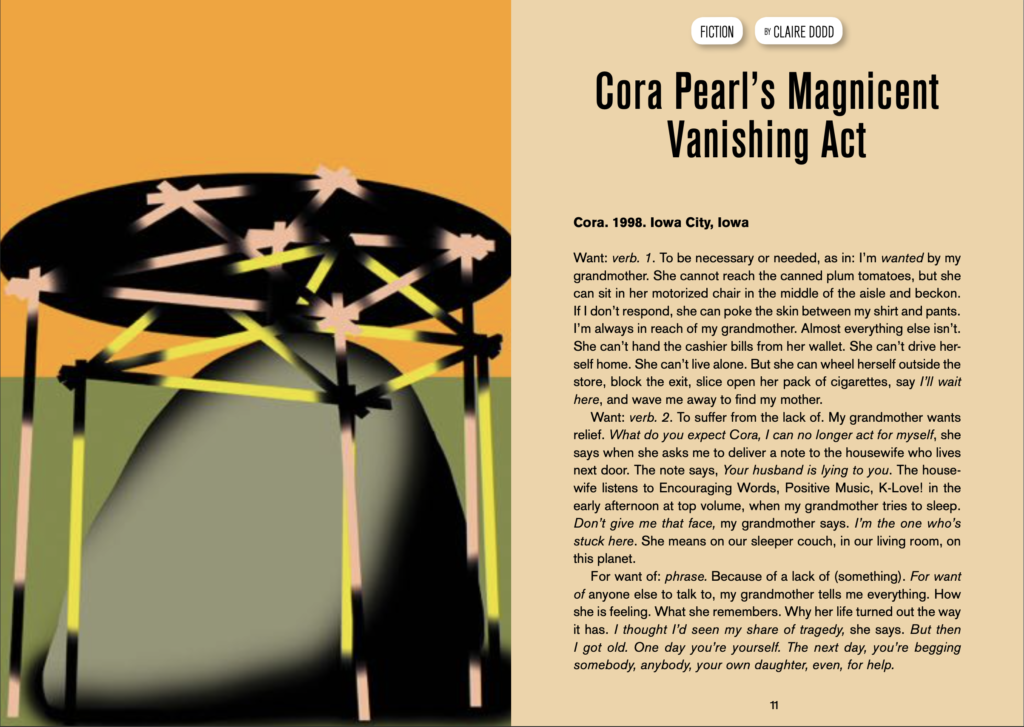
Art by Célestin Krier +”Cora Pearl’s Magnificent Vanishing Act” by Claire Dodd (SAND 22). Bonus: Watch Claire read from the piece with an intro from Ashley on why we chose it
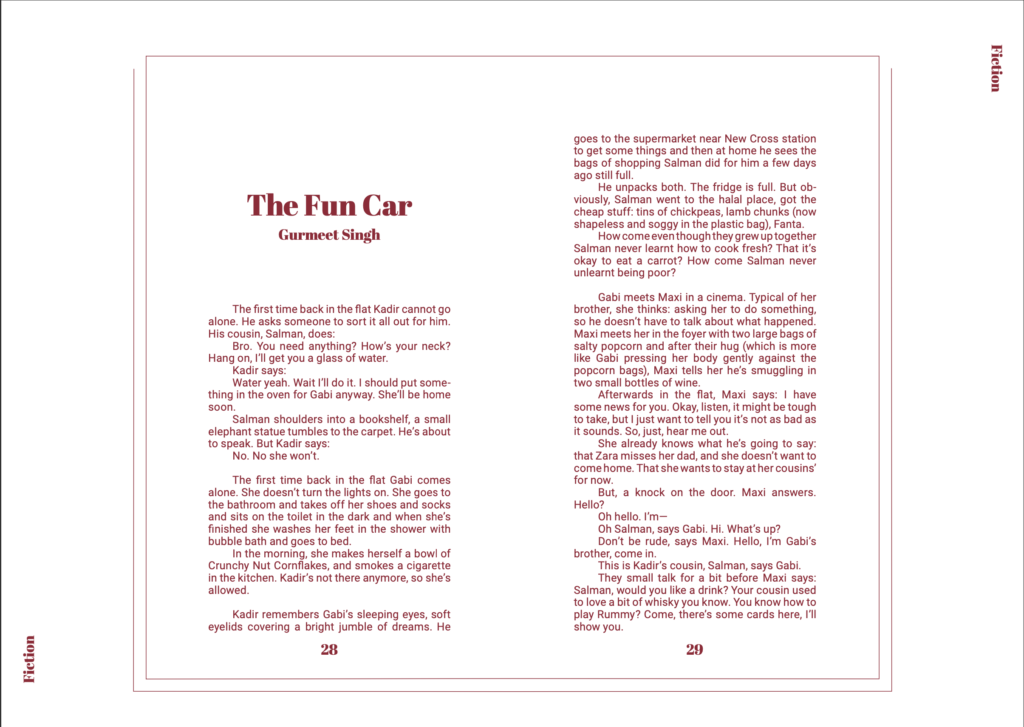
“The Fun Car” by Gurmeet Singh, published in SAND 23
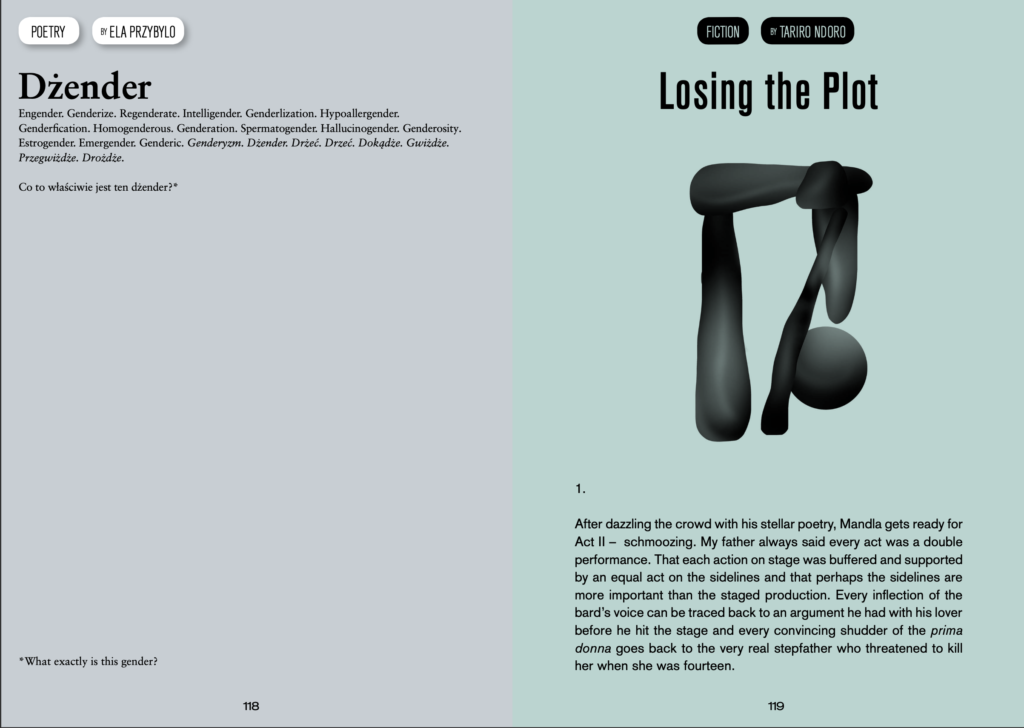
Art by Célestin Krier +”Losing the Plot” by Tariro Ndoro (SAND 22). Bonus: Watch Tariro read from the piece with an intro from Ashley on why we chose it
Like other sections, fiction rejects most work because it is not a fit for SAND, and like creative nonfiction, because the work is an incomplete first or second draft. Fiction also receives many well-written scenes or well-written ideas that are not complete stories in and of themselves. Ashley and Siena also see a lot of internal monologues. These are often full of interesting ideas but lack attention to form so that they are not complete stories, or, if they have a political or social agenda, read more like lectures.
GET TO KNOW US & SEND US YOUR BEST WORK!
Our editors agree that the best way to ensure work is a fit for SAND is to read the journal or use the many resources available online to find out more about what we publish. (For example, the information above is excerpted from editorial webinars on Secrets to Standout Submissions.)
The newly launched SAND ONLINE features excerpts from the current issue and full pieces from the SAND archives in addition to video readings and articles on writing and art. Our YouTube channel contains multiple readings from SAND contributors, editorial interviews, a preview of our latest issue, and more. We feature artists and excerpts from poetry and prose on our Instagram and Twitter and you can find more featured artists, excerpts, and information on our website. You can also sign up to our mailing list to stay up-to-date on all things SAND.
